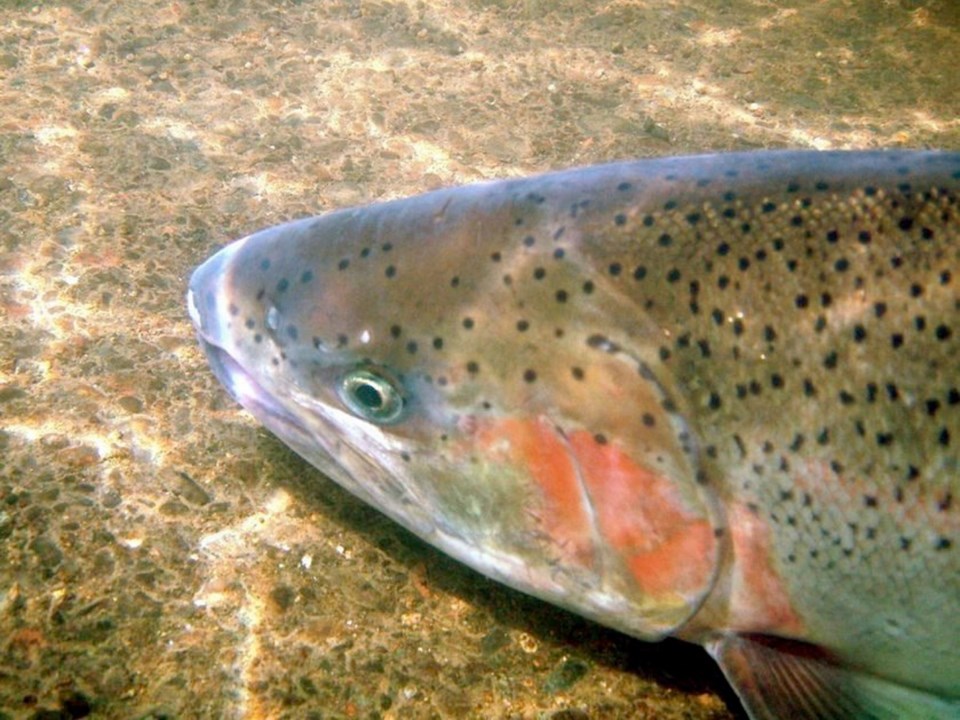Last year, provincial and federal scientists and contractors collaborated to draft a stock recovery assessment of Interior Fraser River steelhead trout. Forty-two experts from government, universities, First Nations and conservation groups vetted the assessment.
Getting that many people to agree on anything is a notable achievement.
So when Fisheries and Oceans Canada staff edited the assessment in a draft scientific advisory report, B.C. officials objected.
Federal officials had edited and omitted important elements of the assessment to support keeping fish harvesting at status-quo levels. The edits, according to a letter from B.C. deputy environment minister Mark Zacharias to federal deputy environment minister Stephen Lucas, rendered the report “no longer scientifically defensible.”
The province is looking to protect steelhead runs. In 2017, just 57 steelhead reached their spawning grounds in the Chilcotin River system, and 177 made it up the Thompson River. Lower Fraser River stocks were also down.
Steelhead are an oceangoing rainbow trout native to B.C. Despite being trout, they behave more like salmon. They hatch and spend their first two or three years in inland mountain rivers, then head out on epic ocean journeys. After another two or three years feeding, swimming and growing in the North Pacific, they return to their home rivers, swimming upstream to spawn. Unlike salmon, which return to their birth rivers only to reproduce and die, steelhead can repeat the cycle.
They are also one of North America’s top sport fish, attracting anglers from around the world. Many B.C. fishing outfitters and communities rely on the steelhead fishery.
The dismal 2017 numbers prompted the Committee on the Status of Endangered Wildlife in Canada to conduct an emergency assessment of the species last year. It concluded that the sea-going steelhead populations in the Thompson and Chilcotin systems face imminent extinction and recommended an emergency listing order under the federal Species at Risk Act.
The province closed the Thompson and Chilcotin steelhead sport fisheries, and the Tsilhqot’in closed the First Nations Chilcotin River steelhead fishery.
The steelhead-report incident, which was reported in the Vancouver Sun last month, illustrates how difficult creating evidence-based policy can be. So many fingers touch and tweak documents before senior decision-makers see them, the resulting smudges can obscure information, with major consequences.
Public policy should consider all implications of possible decisions — economical, political, social and environmental. All of that information should be backed up by the best, most objective information available.
If, after weighing the implications and potential consequences, decision-makers decide to favour one or two interests over others, at least they’ve made the decision based on the best information available. Informed decisions are the most defensible decisions.
However, to cherry-pick and edit scientific evidence to further a particular public policy direction not supported by the science — and call it scientific advice — destroys trust in both science and the policy process. It also approaches ethically questionable territory.
A few cases of scientific fraud have surfaced in recent years, in which data were faked or misrepresented or research subjects were selected to support preferred outcomes. The most notorious example — one with serious public-health consequences — is the 1998 study linking the measles, mumps and rubella vaccine to autism. The research paper fuelled many parents’ fears about vaccines and led to an enduring anti-vaccine subculture. Despite the paper being discredited and retracted in 2010, its damage continues. It contributed to, for instance, the current measles outbreak here in B.C.
Admittedly, a science advisory report isn’t a research manuscript. Its purpose is to provide policy advice. However, as a “science advisory” report, there’s a presumption that the advice is grounded in the actual underlying science, not some misrepresented version of it.
Such are the fine distinctions of both science and integrity.
The province’s objections to the draft science advisory report’s presentation and use of the stock assessment report data have prompted meetings between federal and provincial ministers to discuss how future collaboration might work.
Perhaps the talks will influence how national public policy affecting the province is shaped. Perhaps they will help to restore collaborators’ trust in the policy process.
Whether they lead to saving Interior Fraser steelhead stocks, however, remains to be seen.



